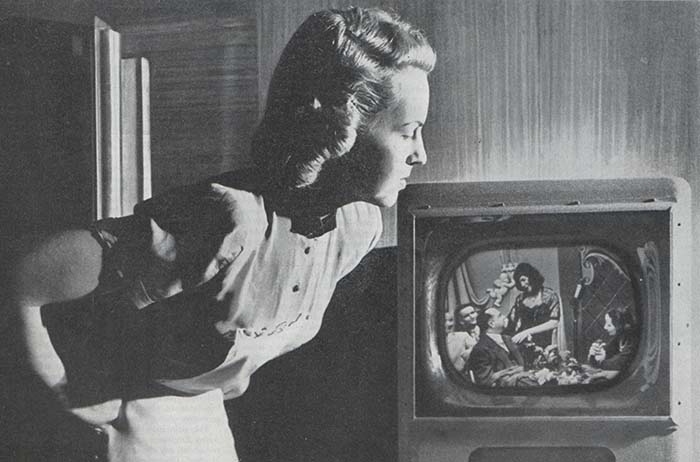A Clear Picture of Television’s Future In 1967
Television will turn 84 years old on September 7, 2011, and it never looked better.
In its youth, television was a chunky piece of furniture with a tiny, round screen showing fuzzy images of low-budget programs. Despite its shortcomings, it became popular. Between 1950 and 1963, the number of American household with a television jumped from 9% to 92%.
As the audience got larger, the technology got better. Television sets became more reliable through the ‘60s. The reception improved. The picture improved. The major networks started broadcasting programs in color.
Even greater improvements were coming according to Sanford Brown, who wrote “Tomorrow’s Many-Splendored Tune-In” for the Post in 1967. Surprisingly, just about every prediction he made in the article became reality. For example:
All sets in the not-distant future will be color instruments, with black-and-white having long before gone the way of the windup phonograph.
Integrated circuits will make sets smaller, simpler, more reliable and less expensive, and may forever loosen the TV repairman’s grip on the U.S. economy.
(“Grandpa, what’s a ‘TV repairman’?”)
Smaller sets do not, of course, mean smaller screens. TV engineers expect screens to get much bigger … the screen of the future [will use] electro-luminescent panels embedded in the screen.
In fact, today’s flat screen TVs are able to create images without an enormous cathode ray tube by embedding small cells of ionized gases in the screen.
Three-dimensional TV is even farther away, if it is coming at all. There is some doubt that the public would be eager to pay for it, in view of the fairly tepid reception given to 3-D movies.
An even more important device will be the videograph, or whatever name is eventually coined for recordings that register pictures as well as sound. The price is still too high for the average consumer—about $400 for a player … and $20-$100 for each program cartridge, depending on length and content—but a vast home market would be in sight as soon as [the developers] brings the cost down.
But the technology with the greatest potential, according to Brown, was cable television, which was still in its infancy (only 2% of households had cable service that year.) With a cable connection to a national network, he said, “the passive TV viewer will be able to send back signals along the line.”
As he predicted, the future was highly interactive. It wasn’t cable television that gave Americans their electronic connection to the world, however. It was the internet.
Homes could be connected to a central computer for instant figuring of, say, income taxes
High-speed electrostatic printing devices could be attached to TV sets so the viewer need only press a button, then wait a minute before tearing off an electrostatic newspaper to read at breakfast.
Housewives could examine merchandise projected on TV screens and place orders by punching a couple of buttons.
Pollsters could obtain immediate reactions to TV show, or commercials, or even political candidates. Politicians could obtain an accurate consensus from their constituents on important public issues.
He even foresaw the virtual office and the digital workplace:
Using picture phones, instant memorandum printers, big-screen television for conferences, and computer circuits providing information at the touch of a button, a company could operate just as well as if everyone were in the same building. It might even operate better, since employees could live closer to work, in pleasant surroundings, and feel like members of team rather than cogs in a giant corporate machine.
For all the promise of this new technology, though, Brown saw no corresponding rise in the quality of programming. Maybe the picture on the screen was getting clearer and more colorful, but the sitcoms and westerns had barely evolved since the 1950s.
Brown quoted the current FCC chairman—”The future of television is no longer a question of what we can invent. It is a question of what we want.”—and then asked:
What do we want?
It may be that we will turn to TV for ever more exotic escapism and more titillating titillation and let it go at that, leaving its real potentials untapped.
If such is the case, it might be inaccurate to say that it is what we “want,” but it would not be unfair to say it is what we deserve.
